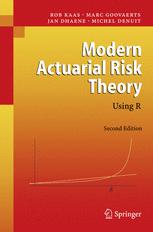

Most ebook files are in PDF format, so you can easily read them using various software such as Foxit Reader or directly on the Google Chrome browser.
Some ebook files are released by publishers in other formats such as .awz, .mobi, .epub, .fb2, etc. You may need to install specific software to read these formats on mobile/PC, such as Calibre.
Please read the tutorial at this link: https://ebookbell.com/faq
We offer FREE conversion to the popular formats you request; however, this may take some time. Therefore, right after payment, please email us, and we will try to provide the service as quickly as possible.
For some exceptional file formats or broken links (if any), please refrain from opening any disputes. Instead, email us first, and we will try to assist within a maximum of 6 hours.
EbookBell Team

5.0
110 reviewsModern Actuarial Risk Theory contains what every actuary needs to know about non-life insurance mathematics. It starts with the standard material like utility theory, individual and collective model and basic ruin theory. Other topics are risk measures and premium principles, bonus-malus systems, ordering of risks and credibility theory. It also contains some chapters about Generalized Linear Models, applied to rating and IBNR problems. As to the level of the mathematics, the book would fit in a bachelors or masters program in quantitative economics or mathematical statistics.
This second and much expanded edition emphasizes the implementation of these techniques through the use of R. This free but incredibly powerful software is rapidly developing into the de facto standard for statistical computation, not just in academic circles but also in practice. With R, one can do simulations, find maximum likelihood estimators, compute distributions by inverting transforms, and much more.